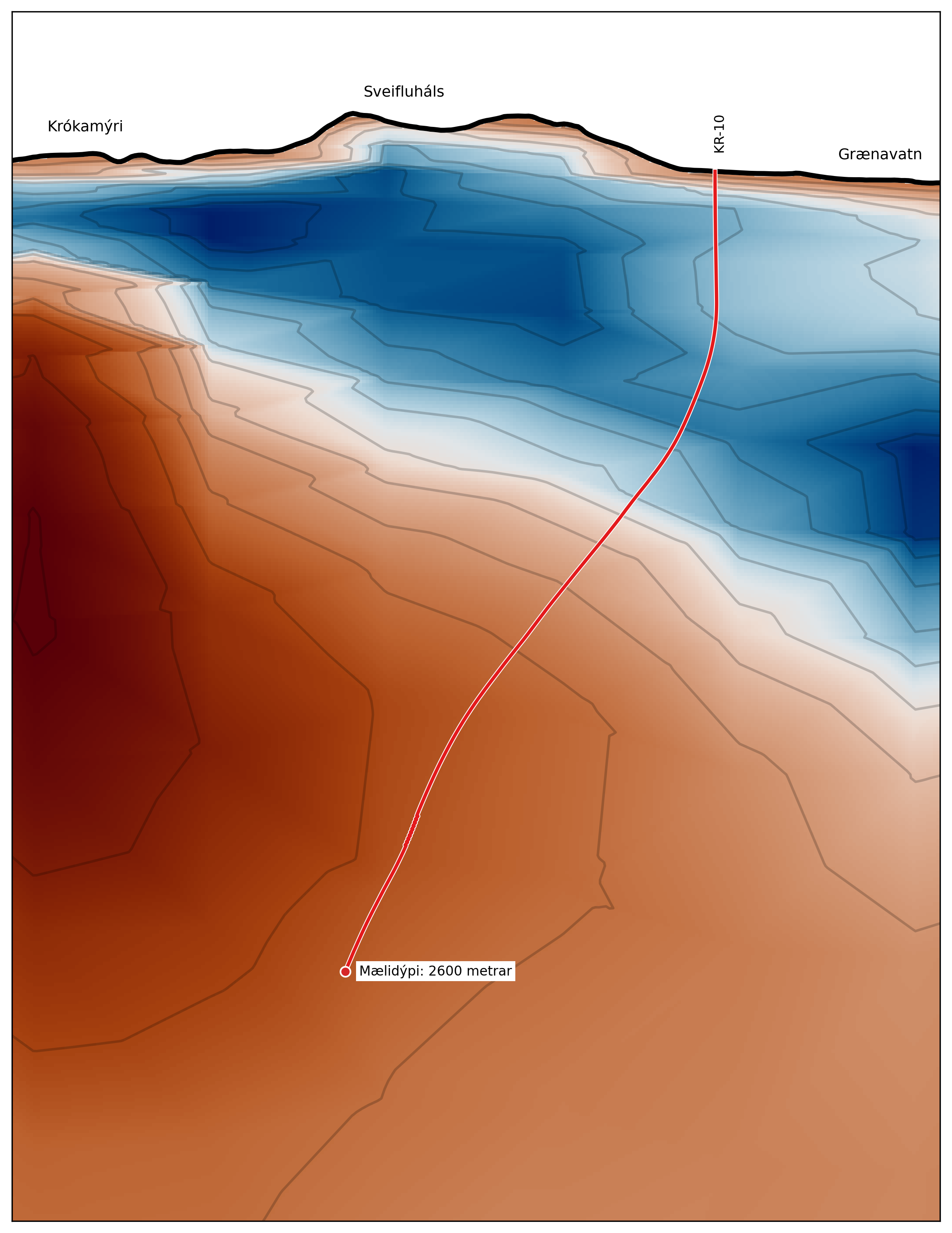The drilling of the first exploratory borehole in the geothermal area at Sveifluháls in Krýsuvík has now been completed and the initial measurements are promising. The drilling began in mid-April, using the electric drill Óðinn.
There are indications of sufficient geothermal heat, but it is too early to determine the potential for utilization of the area. More exploratory boreholes are needed and it can take up to a year after finishing drilling operations before it can be confirmed whether a borehole is suitable for production.
In this first exploratory drilling, a slightly shallower hole was drilled than initially planned. The measured depth reached about 2,600 meters, which is the actual length of the hole, but the total vertical depth is about 2,200 meters. Directional drilling was used for most parts, a technique applied in geothermal drilling to minimize the environmental impact. With directional drilling, it is possible to access hot and water-rich areas without disturbing the surface directly above them while also allowing for the exploration of larger areas from the same drilling pad. This keeps the environmental footprint of the operations at a minimum.
Exploratory Drilling continues
First measurements in the borehole indicate significant geothermal heat in the area, although it is too early to assert its production potential. However, they raise hopes that the area can be used for geothermal production in the near future. The new hole now needs to heat up after being cooled during the drilling process and will then be allowed to "blow" to assess rock temperature, pressure, and the amount of geothermal fluid for further decision-making.
This first borehole is called KR-10, and the next borehole, KR-11, is already in preparation. It is planned for the area just north of Bleikhóll and is currently being prepared in collaboration with the planning authority in Hafnarfjörður municipality.
The drill is now being disassembled and restoration work is underway at the drilling site. It will however be possible to reuse the same pad for further drilling in the future. More detailed analyses and results from measurements are expected in the coming months in collaboration with ISOR.
Close Cooperation with Hafnarfjörður Municipality
The current exploration is based on an agreement signed by the municipality of Hafnarfjörður and HS Orka in June of last year, granting permission for research, land use, lease, and utilization of resource rights in connection with the potential utilization of resources in Krýsuvík. The aim of the agreement is to explore the possibility of harnessing geothermal energy and extracting groundwater in the Krýsuvík area in an economical and environmentally friendly manner, alongside the development of a resource park that enables further sustainable utilization of cascading production streams.
Significant increase in Energy Security
Based on research in the past the Krýsuvík has long been considered a promising geothermal area for energy production. There are hopes to produce, among other things, hot water for Hafnarfjörður municipality and the capital area, as well as electricity for the national grid.
With resource utilization in Krýsuvík, the hot water supply security for the capital area will be enhanced, as the majority of hot water currently comes from one direction, that is from the Nesjavellir and Hellisheiði power plants in the Hengill area.
Following a severe storm hitting Iceland in December 2019, a government task force worked on an action plan in which Krýsuvík was defined as a particularly important area for the security of the heating system in the capital area and the Reykjanes Peninsula region. One part of the government's plan to ensure energy security in the future includes a feasibility study of a joint heating plant in Krýsuvík for the Reykjanes Peninsula and the capital area under the auspices of public interest, national security, and priority thermal production for the benefit of the heating system.










